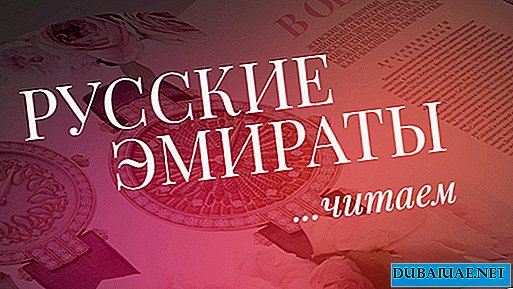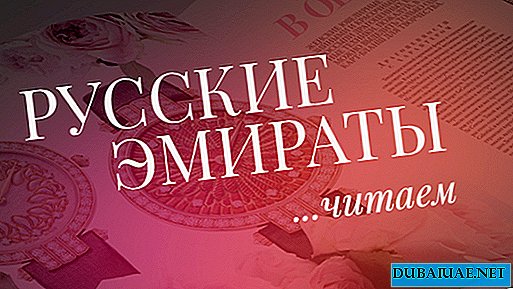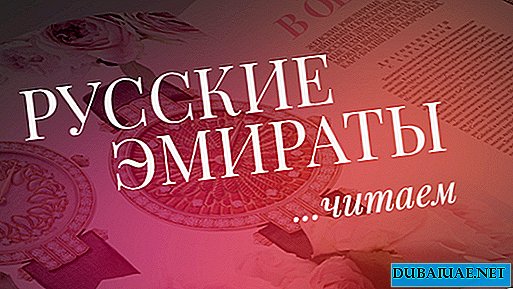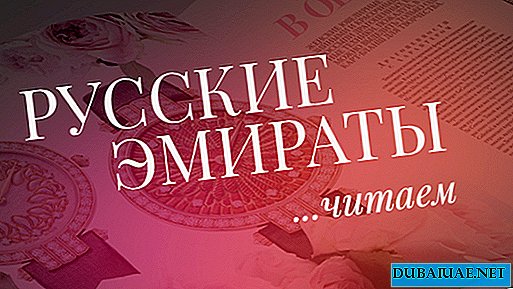 It’s better to see once than ... to regret all my life that I haven’t seen. "Pearl of the Indian Ocean", "a tear flowing down from the century of India", "paradise" .... What definitions given to him at different times by the most famous people in the world - from Rabindranath Tagore to Anton Chekhov, did not receive the island of Sri Lanka. And in fairness it’s worth saying that all these names are fully justified, but even they are not able to reveal what this stunning tropical island actually represents ...
It’s better to see once than ... to regret all my life that I haven’t seen. "Pearl of the Indian Ocean", "a tear flowing down from the century of India", "paradise" .... What definitions given to him at different times by the most famous people in the world - from Rabindranath Tagore to Anton Chekhov, did not receive the island of Sri Lanka. And in fairness it’s worth saying that all these names are fully justified, but even they are not able to reveal what this stunning tropical island actually represents ...
Ayyubovan!
With this traditional greeting, you will be welcomed by any resident of the island, clasped hands with palms together at chest level. “Ayyubovan” means a wish for a long and happy life and is accompanied by a kind and open smile. By the way, in Sri Lanka everyone smiles - from small to large. And it’s not at all because you are a tourist and contribute to the strengthening of the national economy, but just like that ... Smiling people are, it seemed to me, one of the main symbols of Sri Lanka. I’ll tell you about the rest later, but for now - “Ayubovan!” ... And on the way, dear readers.
Ceylon Chronicles
According to Hindu legend, most of Sri Lanka was conquered in ancient times by Ramachandra, who was the seventh reincarnation of the god Vishnu. The written history of the country is in the Mahavamsa Chronicle. It was started in the 6th century A.D. and was led by Buddhist monks until 1815. If you rely on the chronicle, then the island in 504 BC was conquered by the Indian prince Vijaya, whose descendants ruled Sri Lanka, then called Sinhala, for several centuries. Since the end of the 3rd century A.D. until the middle of the 12th century, Tamil kings and other invaders from southern India dominated Sinhala. Sinhala or Sinhala Dvina (Skt. Simhala, probably from Simha = lion, Simhaladvopa: dvopa = island) - the ancient Indian name for Sri Lanka and then its inhabitants. The name of the people of the Sinhalese originates from it, which today makes up the vast majority of the population of the southern part of the island.
The origin of the Sinhalese tribe is not fully understood. The growth of sinhalese (or sinhala) is usually average (1.6-1.7 meters), facial features are thin and regular, body shapes are beautiful and proportional. Especially beautiful are Sinhalese women. Skin color is different: from light brown or olive, reaching up to black. Eyes are sometimes light brown, hair is almost always black, long and silky. The dominant religion of the islanders is Buddhism, introduced in Ceylon at the end of the 4th century BC, but having lost its purity. There are quite a few Christians among the Sinhalese (about 100,000 Catholics and 50,000 Protestants).
At the beginning of the 15th century, the island was occupied by Chinese troops, and Sinhala was divided into several small states. In 1517, the Portuguese, having established friendly relations with one of the local rulers, built a fort in Colombo. Their influence grew, and by the end of the 16th century the Portuguese controlled a fairly large area of the island. In 1638 - 1639, the Dutch force captured almost the entire island, and it was under their influence until 1796, when it actually came under British control. In 1798, the entire territory of the island, with the exception of the mountain kingdom of Kandy, became a colony of the British crown.
In 1803, Britain also occupied the kingdom of Kandy, and in 1815 annexed it to the royal colony. On February 4, 1948, the colony became an independent member of the Commonwealth of Nations. At that time, the country was called Ceylon. May 22, 1972 the country received independence and the name of the Republic of Sri Lanka.
 Hi Colombo!
Hi Colombo!
The capital of the country, Colombo, is the administrative and financial center of Sri Lanka. Here is the only international airport in the country, so if you decide to go to Sri Lanka and see as much as possible, be prepared for ground trips, as a rule, along narrow mountain serpentines. The government of the Republic sits in the capital, there are a huge number of monuments and monuments belonging to different eras and, accordingly, reflecting the reign of various conquerors, colonialists or kings of the island. The World Trade Center building, for example, was donated to the government of Sri Lanka in the 1970s by friendly China. But the temple buildings (mainly Buddhist temples, of which there are a great many in Sri Lanka), the islanders carried out independently. Catholic churches and schools bearing the names of all famous saints appeared with the advent of Europeans. The English, by the way, despite all the disadvantages of life in the colony, the Sri Lankans are still grateful for the education system that is still operating in the country. Yes, education in Sri Lanka is free. Uniforms, textbooks, buses, and school meals are provided and paid for by the state. Honor and praise!
Colombo is located on the coast and is famous for its clean sandy beaches, most of which are located in the northern part of the capital, near the airport. By the way, the total length of Sri Lankan beaches is more than one thousand kilometers. There are a lot of fashionable hotels and beach resorts in the city related to four- and five-star chains, the best of which is Hilton. Here is a replica of the White House in Washington, which today houses the municipality of Colombo, as well as a stunning park, the entrance to which is vigilantly guarded by a "golden" Buddha statue ... In general, the capital is like a capital.
There is in Colombo and the world famous Royal Golf Club, which was built by the British 125 years ago. Everything here is simply saturated with the history of an exciting game called golf. The walls of dark wood, low ceilings, furniture in the colonial style ... But, most importantly - this is probably the smell. The real spirit of the times and centuries-old wood and stone. The territory of the club is quite large. Somewhere around the eighth hole there is a regular train. It just so happened. First, they built a railway, and then created a golf club. A funny story is connected with the train about how one of the golfers, hitting the ball, landed right in the window of a passing train, and the ball “left” from the starting point at a distance of 120 kilometers. This "blow" was recorded in the annals of the club, as the "longest". Such a game! Where "all moves (strokes) are recorded" ...
"Mountain Country" Kandy
One of the most beautiful places in Sri Lanka is the “mountain country” or “country of hills” of Kandy. Here live proud and beautiful people who for a long time did not obey the colonialists, but lived under the vigilant eye of the ruling royal people. Incidentally, the Sri Lankans are very hardworking and clean. Despite a rather modest, if not poor, lifestyle (the average salary of an islander is approximately $ 1000 per year), they constantly sweep something, wash, repair and build, weave furniture or make stunning batiks on cotton. The houses of the locals are neatly whitewashed and tiled. Along city roads and mountain serpentines, flowers and flowering shrubs are planted. Fortunately, in a local climate, any stick stuck in the ground begins to germinate in two days on the third.
The city of Kandy has a huge botanical garden covering an area of more than 67 hectares. It contains thousands of the most beautiful and exotic plants in the world. However, the most popular place among tourists and islanders can be safely called the Pinnaval elephant nursery, founded in 1975. It is home to orphan elephants who fought off at one time from their parents or became victims of poachers or wild animals. In the nursery they are cared for and cherished, they are given cow's milk from the nipples and fed with coconuts and fresh leaves of jac and tamarind. Today, Pinnaval contains a herd of 60 elephants, each of which eats 76 kilograms of green feed per day. Upon reaching the age of 6, teenage elephants are released into the jungle, or attached to zoos or to numerous farms where these cute animals ride tourists and willingly take pictures with them.
 It must be said that Sri Lanka is a state, the lion's share of export of which is agricultural products. These are coconuts (there are hundreds of species, by the way, the most expensive is “royal” yellow), and cashew nuts, and a variety of fruits (durians, rambutans, mangosteen, pineapples, lychee, papaya, guava and others), and rubber, and a huge number of spices and aromatic oils and essences. By the way, in October is the pineapple season. They are sold to all and sundry right along the roads. I have never tried such sweet pineapples as in Sri Lanka. True, the islanders themselves eat them, generously sprinkled with salt and hot chili. Tasty, probably, but I did not dare.
It must be said that Sri Lanka is a state, the lion's share of export of which is agricultural products. These are coconuts (there are hundreds of species, by the way, the most expensive is “royal” yellow), and cashew nuts, and a variety of fruits (durians, rambutans, mangosteen, pineapples, lychee, papaya, guava and others), and rubber, and a huge number of spices and aromatic oils and essences. By the way, in October is the pineapple season. They are sold to all and sundry right along the roads. I have never tried such sweet pineapples as in Sri Lanka. True, the islanders themselves eat them, generously sprinkled with salt and hot chili. Tasty, probably, but I did not dare.
Spices are grown in Spice Gardens (spice gardens), where experienced gardeners, apparently with medical knowledge, will talk about the beneficial properties of certain substances and plants, their positive effect on the body and methods of use. They will show how vanilla and various types of cocoa beans grow in the wild, how to harvest cinnamon and sandalwood oil, and will be treated to a healthy drink made from cocoa, bananas, milk and spices. There are also shops where you can buy all kinds of balms and rubbing, aromatic creams and oils, energy syrups for drinks and many other wonders at very ridiculous prices.
In the town of Noire Elias ... or time to drink tea
And yet, the biggest article of Sri Lankan export is the most delicious and most famous Ceylon tea in the world. Of course, tea is grown in India, and Kenya, and in other countries, however, it seems to me that it is the nature of Sri Lanka that favors tea plantations.
Tea was brought to Ceylon by the British for the first time in 1824, and they began to grow it, as an experiment, in the botanical gardens of Piradeniya near Kandy. At that time, strangely enough, coffee was the main drink, agricultural product, and export item. And only in 1870 the Scot James Taylor broke the first tea plantation in Kandy, gradually replacing coffee plantings.
Today, Ceylon tea is divided into three main categories: valley (the one that is grown in the valleys on the coast), mountain (the one that grows in the "land of hills" Kandy) and high mountain (the one that is produced in the mountains of Noir-Eliya). The most expensive and high-quality tea is considered to be grown in the fertile mountains of Noir Eliya, at an altitude of more than 2000 meters above sea level. It has a humid and cool climate, fresh mountain air, hills "painted" with all imaginable shades of green, turbulent rivers and stunning waterfalls. The British gave the place Noire Elya the name "little England". There are frequent rains and fogs, houses very similar to Scottish ones, and there is even a racetrack where local cows roam when there are no races ... Here, in Noire Elya, tea plantations belonging to such large corporations as Dilmah and Lipton are broken, and also a great variety of tea factories.
 Glenloch Tea Factory is one of many in Noire Elya. It produces the best varieties of Ceylon tea - from the world's most expensive B.O.P.F (small black tea made from the two topmost, unblown leaves of the tea bush) to O.P. (Orange Pekoe - large leaf tea from the upper leaves with a rich taste and dark orange color), the elite varieties Golden Tips and Silver Tips (tea, dried not in the oven, but in the sun) and flavored tea blends. Factory prices are several times lower than in specialized tea shops across the country, and even more so in Duty Free. For a kilogram of B.O.P.F tea at the factory (note that this is a tourist destination, which means everything is expensive) they will ask for 900 local rupees ($ 1 = 103.99 rupees), and from the duty-free shop at the airport or in the hotel - from 2000 rupees.
Glenloch Tea Factory is one of many in Noire Elya. It produces the best varieties of Ceylon tea - from the world's most expensive B.O.P.F (small black tea made from the two topmost, unblown leaves of the tea bush) to O.P. (Orange Pekoe - large leaf tea from the upper leaves with a rich taste and dark orange color), the elite varieties Golden Tips and Silver Tips (tea, dried not in the oven, but in the sun) and flavored tea blends. Factory prices are several times lower than in specialized tea shops across the country, and even more so in Duty Free. For a kilogram of B.O.P.F tea at the factory (note that this is a tourist destination, which means everything is expensive) they will ask for 900 local rupees ($ 1 = 103.99 rupees), and from the duty-free shop at the airport or in the hotel - from 2000 rupees.
In the center of Noire Eliya there is a local attraction - the luxurious and old Nuwara Golf Club (1887) with an 18-hole course where you can become a lifetime member of the club by paying a completely symbolic, from the point of view of a European or American, entry fee (something about 5000 dollars). Another wonderful place in the town is the old post office, decorated with a clock tower, which is more than 200 years old, and from where all the members of our group sent postcards to their parents. In different parts of the world - and in Australia, and in India, and in Kuwait, and in the UAE, and, of course, in Russia. Like good old times. Suddenly comes. Cool ...
Hotel St. More than 175 years old, the Andrews Hotel is another echo of the colonial past. With fireplaces and candles in the rooms, checkered curtains on the windows, a special living room and a library in the lobby, a restaurant with copper dishes and ... a heating pad in bed. To top it off, an old maid, such as Mrs. Hudson, will knock on the room and will offer you a glass of hot milk with cookies before bedtime. Impressions are indescribable!
Country unlike others
Singala. Ceylon. Sri Lanka. There is something in this country that is fascinating at first sight. It’s impossible to go everywhere and talk about everything. Somewhere in these parts, according to legend, Adam and Eve descended to Earth. Many ancients even correlated the location of the Garden of Eden with Ceylon. This amazing island has many UNESCO-protected historical sites, as well as a large number of places associated with the name of Buddha. Cultural attractions of Sri Lanka include such shrines as: Adams Peak (2,243 meters) - the holy mountain, where according to legend there are footprints of Buddha, the Tooth Temple in Kandy, Anuradhapura - the ancient royal city of the 11th century, the Sacred Tree of Bo, in the shadow of which rested the holy Buddha, the huge ark of Ruvanvelisey Dagob and many others.
The golden beaches of Sri Lanka attract tourists, ayurveda centers and spice gardens - those who want to improve their health, mountains - people who are at risk and ready to climb, Buddhist shrines - believers and curious, national parks and reserves - naturalists and beholders of wildlife, golf clubs and racecourses - athletes and fans .... Sri Lanka, where summer reigns year round, is ready to meet with you. Are you ready?
Elena Olkhovskaya
The author is grateful for arranging the trip of the national airline Sri Lankan Airlines (www.srilankan.aero) and the travel agency Jetwing Tours (Sri Lanka), as well as the company Biz Сom (Dubai)










